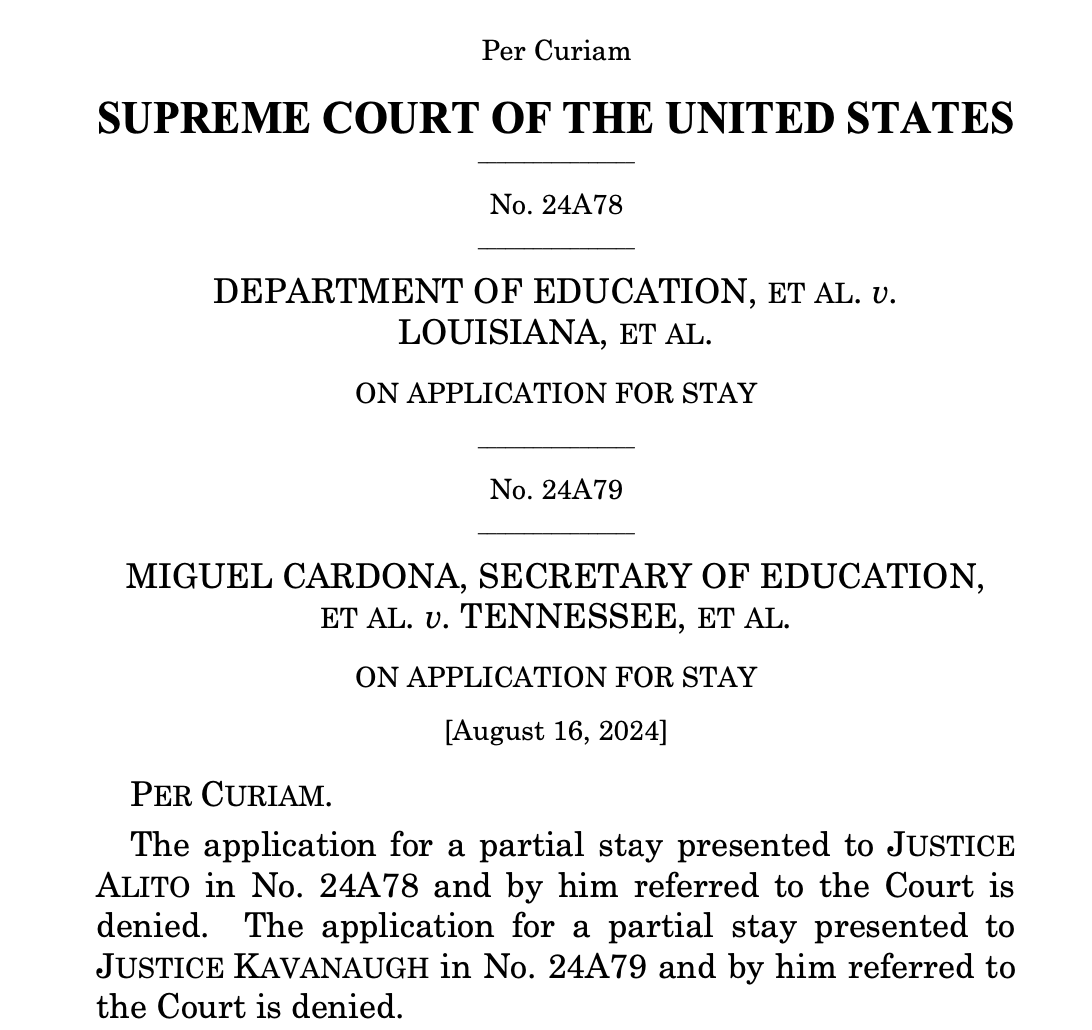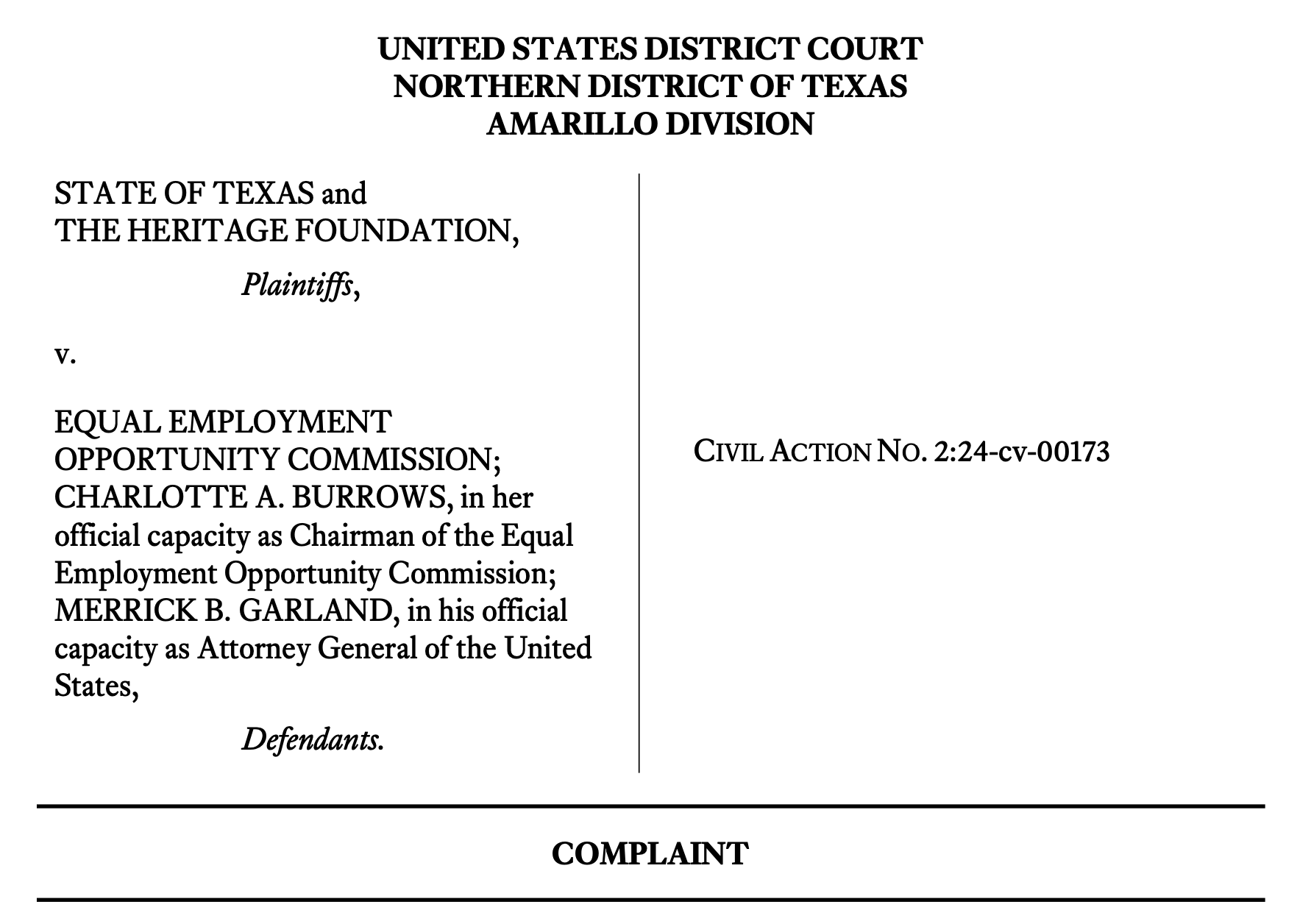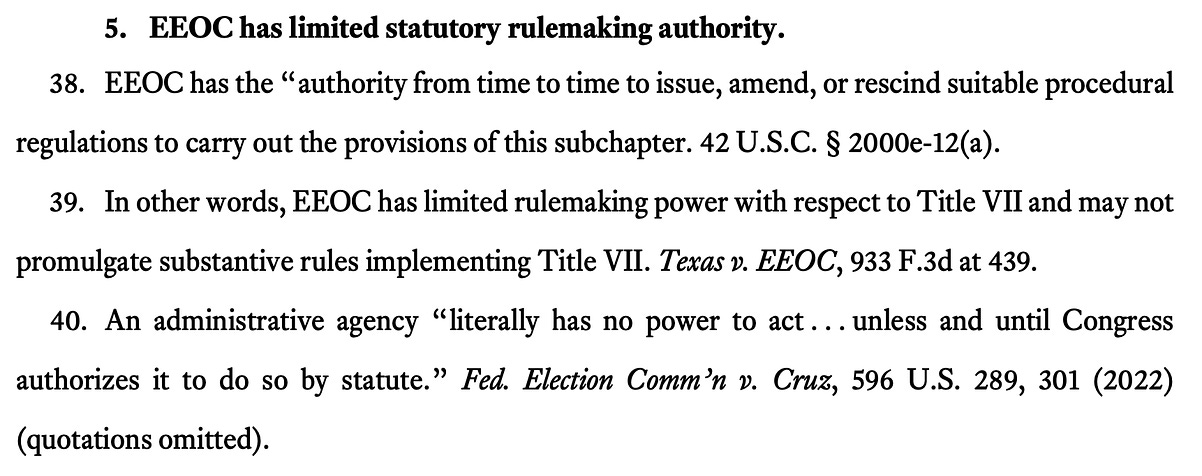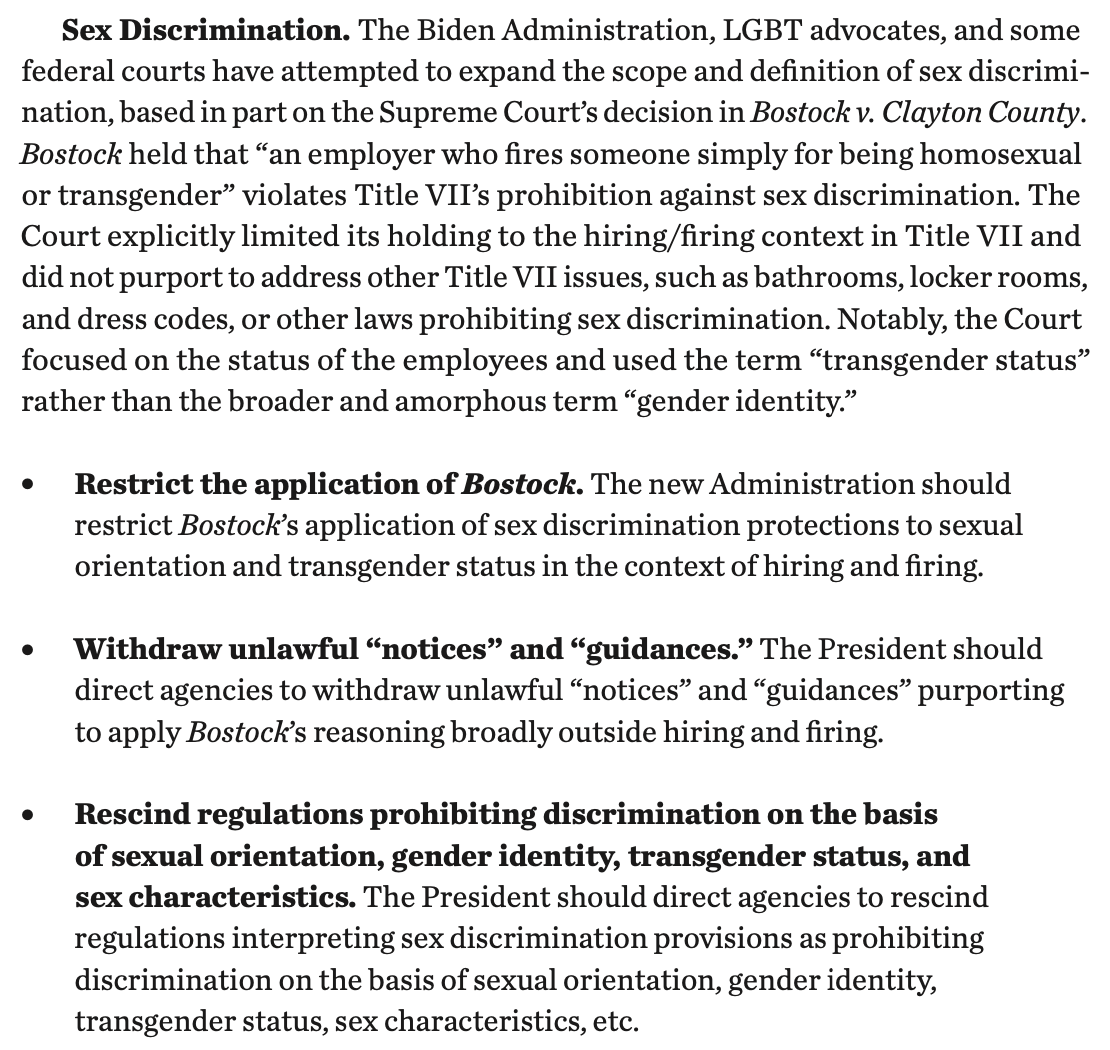Thank you for being one of more than 35,000 people supporting Law Dork with a free subscription! I am so grateful to everyone for reading, subscribing, and sharing Law Dork. That said, my independent legal journalism — like today’s report on the Eleventh Circuit — does cost money to produce. Please consider a paid subscription, as little as $6 a month, to Law Dork today. If you do that, you’ll receive bonus features available only to paid subscribers — and support this essential reporting. I know that not everyone can afford it or prioritize a paid subscription, and, if that’s you, I am so glad you are here! Thanks, Chris Breaking: SCOTUS, 5-4, allows courts to block full Title IX sex discrimination rule during appealsGorsuch joins Sotomayor's dissent, along with Kagan and Jackson. Also: The Heritage Foundation goes to Texas to put anti-trans Project 2025 playbook into motion.A little past 5:00 p.m. Friday — more than two weeks after the Biden administration’s new rule addressing sex discrimination under Title IX of the Education Amendments of 1972 went into effect — the U.S. Supreme Court finally ruled on a Justice Department request to limit injunctions against enforcement of the rule during litigation. On a 5-4 vote, the Supreme Court rejected DOJ’s request — keeping the rule completely blocked in 26 states and hundreds of schools in other states while litigation proceeds, despite the fact the almost all of the challenges only addressed three provisions of the lengthy rule that were aimed at providing protections for transgender students. Justice Sonia Sotomayor wrote the dissent, in which she was joined by the two other Democratic appointees, Justices Elena Kagan and Kentanji Brown Jackson, and Justice Neil Gorsuch, a Republican appointee who wrote the Supreme Court’s 2020 decision in Bostock v. Clayton County that was relied on by the Education Department in crafting its Title IX rule. (In Bostock, the court held that the sex discrimination ban in Title VII of the Civil Rights Act of 1964 includes a ban on sexual orientation discrimination and gender identity discrimination.) As Sotomayor wrote for the dissenters, “Today … a majority of this Court leaves in place preliminary injunctions that bar the Government from enforcing the entire rule—including provisions that bear no apparent relationship to respondents’ alleged injuries. Those injunctions are overbroad.” That concern about overbroad injunctions led the court earlier this year to partially stay an injunction blocking Idaho’s ban on gender-affirming medical care for minors — allowing the state to enforce the ban against most people during the appeal. Neither Chief Justice John Roberts, who joined Gorsuch’s 2020 majority in Bostock, nor Justices Amy Coney Barrett or Brett Kavanaugh, who in other instances have criticized overly broad injunctions, were willing to provide the four dissenters with a fifth vote to allow some of the Title IX rule to go into effect while litigation continues. Instead, they joined with the court’s two most extreme-right members, Justices Clarence Thomas and Sam Alito, to allow the full rule to be blocked during litigation. In an unsigned, per curiam opinion, the court stated for the five that lower courts “concluded, at least at this preliminary stage, that the allegedly unlawful provisions are not readily severable from the remaining provisions.” Noting that “the burden is on the Government as applicant to show, among other things, a likelihood of success on its severability argument,” the unsigned opinion for the five concluded — with vague, inscrutable language¹ — that the government did not meet that burden and, as such, did not get the partial stay it sought. The cases will now continue in the lower courts, with patchwork enforcement across the country. Law Dork has covered the Title IX rule challenges in depth. Check it out here. Heritage Foundation goes to Texas to advance Project 2025The Heritage Foundation filed a lawsuit on Thursday in Texas — despite being based out of Washington, D.C. — to challenge recent guidance from the Equal Employment Opportunity Commission that is aimed at decreasing discrimination against LGBTQ employees in the workplace. What’s more, the lawsuit was filed in the Amarillo Division of the Northern District of Texas, meaning that it had a 100% chance to be assigned to Judge Matthew Kacsmaryk, the far-right Trump appointee who is in headlines far more often than any district court judge should ever be. The case challenges the validity of the EEOC’s 2024 guidance to employers about implementing Title VII of the Civil Rights Act of 1964 following the U.S. Supreme Court’s 2020 decision in Bostock v. Clayton County that the sex discrimination ban in Title VII includes discrimination on the basis of sexual orientation or gender identity. The case was, as intended, assigned to Kacsmaryk, who previously ruled against the EEOC in a similar challenge to earlier efforts to issue post-Bostock guidance. This is also the judge who unsuccessfully tried to take mifepristone off the market last year and has ruled against the Biden administration’s Title IX sex discrimination education rule — a rule applying Bostock to Title IX of the Education Amendments Act of 1972. How did a D.C. think tank find its way to the all-too-convenient courthouse in Amarillo, Texas? Heritage did so by teaming up with Texas. The Lone Star State is the lead plaintiff in the lawsuit and the justification used for filing the lawsuit there — why venue is appropriate. Texas regularly has filed lawsuits in Amarillo — despite it not being the center of state government — and the only real rationale for the move is that Kacsmaryk is guaranteed to get assigned any case filed in the single-judge division. The lawsuit challenges three aspects of the guidance — relating to pronoun usage, restrooms, and dress codes — as going beyond Bostock and a violation of the Administrative Procedure Act because the guidance is either contrary to law or arbitrary and capricious or goes beyond the EEOC’s authority. It does so in a lawsuit that more or less refuses to acknowledge the existence of transgender people. As it states right from the start: In a later part, discussing the dress-code guidance, this is how the lawsuit describes the situation: The lawsuit targets the post-Bostock guidance, to be sure, but its efforts to do broader damage to the agency are clear from the complaint. At one point, citing an earlier ruling from the far-right U.S. Court of Appeals for the Fifth Circuit to which any appeal of a ruling from Kacsmaryk goes, the complaint lays out an argument regarding the EEOC’s “limited rulemaking power” under Title VII. Why go through all of this fairly transparent forum-shopping? Diminishing the power of the EEOC — including specifically on the grounds attacked in the lawsuit — is directly called for in the Project 2025 policy book, Mandate for Leadership, in which Heritage has played a key role. While there have been efforts to claim that Project 2025 is shutting down and efforts by Donald Trump to distance himself and his campaign from the effort, few things make more clear how real the 922-page book’s plans are than the fact that this state-organization team effort puts in motion the process laid out in the Project 2025 book for eliminating LGBTQ protections that have been sought by the EEOC and diminishing the EEOC’s powers more broadly. First, as to the lawsuit specifically, Project 2025 targets the post-Bostock enforcement efforts of agencies like the EEOC: And, more broadly, Project 2025 would diminish the role and powers of the EEOC — accomplishing directly what this lawsuit asks, in effect, for Kacsmaryk to do: All of this, moreover, makes clear another important way to think about Project 2025. Even if Trump loses, Project 2025 doesn’t go away. Republican-led states like Alabama, Florida, Texas, Missouri, and others — joined or even represented by far-right groups like Alliance Defending Freedom, America First Legal, Heritage, and others — will take actions like this, seeking to use far-right judges to get cases to the 6-3 conservative Supreme Court to advance Project 2025’s goals through the courts. This is yet another version of the contingent planning on the right that I’ve been discussing. 1 The court wrote that “the Government has not provided this Court a sufficient basis to disturb the lower courts’ interim conclusions that the three provisions found likely to be unlawful are intertwined with and affect other provisions of the rule. Nor has the Government adequately identified which particular provisions, if any, are sufficiently independent of the enjoined definitional provision and thus might be able to remain in effect.” You’re a free subscriber to Law Dork, with Chris Geidner. To further support this independent legal journalism, please consider becoming a paying subscriber. |









